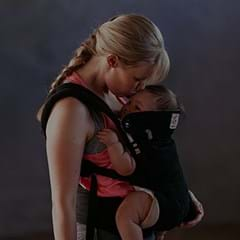The main function of our abdominal muscles is to provide support for the lumbar spine and stabilize the joints of the pelvis. Our deep abdominal muscles combine with the diaphragm and the pelvic floor to enclose the contents of our abdomen creating a cylinder around the mid section. Each muscle constantly draws on the other muscles engaging a low intensity hold which creates the core stability we need for everyday movement.
Put a baby in the middle of the cylinder and that’s when things can go slightly out of whack. A growing baby belly means your anterior muscles (those at the front) stretch and your pelvis begins to tip forward – altering your ability to stabilize this region.
The good news is that nine months is a long time, and a baby bump grows at a gradual rate that your body is equipped to deal with.
During pregnancy your body is flooded with relaxin, which means your muscles become much more compliant to lengthening and stretching. Thanks to the relaxin the muscles in the abdominal cylinder can easily stretch in all directions. The only issue is when the abdominal muscles becoming increasingly elongated – the muscle fibers can no longer grip at their optimal length, and therefore they can’t generate enough tension to stabilize. This can cause a few challenges in the later stages of pregnancy, around the time when there’s a baby sitting on your pelvis and you need this control more than ever!
While the abdominal muscles can stretch significantly they typically don’t tear – however they can separate. Many women suffer structural lateral separation towards the end of their pregnancy. Technically called diastasis recti, this separation is when the connective tissue adhering the two parallel recti muscles to the midline stretches beyond just bouncing back. The actual separation of these muscles is not particularly painful, however it does compromise the structural integrity of the core.
The muscles of the core face their biggest challenge at the end of the nine months – when the baby needs to exit out of the bottom of the abdominal cylinder (aka the pelvic floor). It’s at this stage that this important link in the stability mechanism is lost, core stability is further compromised and the dysfunctions of a weakened pelvic floor can arise. In the case of caesarean births the weakened stability comes from the disruption to the abdominal wall.
But there’s no need to worry! However your baby enters the world, your body can handle it – and you can take action to alleviate any potential issues.
So what can you do to prepare your core for pregnancy?
It’s ideal to be as fit and strong as possible prior to getting pregnant. While pregnancy is not the time to introduce strenuous new training programs, exercise to strengthen the core can be very advantageous. “As your muscles stretch they naturally want to switch off, but if you exercise them it helps the brain keep the muscles activated and working,” advises Bryce Hastings, Physiotherapist and Head of Research at Les Mills. What’s more, if you train your abs during pregnancy it can lessen the degree of abdominal wall separation. Bryce recommends a focus on strengthening the lower abdominal muscles by adopting exercises such as the pelvic tilt. He suggests that pregnant women steer clear of crunches and integrated ab exercises (such as planks) in the later stages of pregnancy, as this is when there is already a lot of stress on the muscles.
Pregnancy is also a good time to start strengthening pelvic floor muscles – this is where kegel exercises come in. Bryce adds that it’s also a good idea to work on maintaining glute tone during pregnancy, as the glutes play an important role in helping support the sacroiliac joint, which can be put to the test once your baby arrives and the regular lifting and carrying kicks in. Bodyweight squats are a great exercise for this.
Diana Archer Mills, Les Mills Creative Director, also has some helpful advice when it comes to maintaining core strength during pregnancy. As a mother of four she has had plenty of experience balancing pregnancy and exercise, and has some simple tips for anyone keen to stay strong with a baby on board.
Diana’s top tips for staying strong during pregnancy
- Yoga or BODYBALANCE/BODYFLOW classes are great for strengthening and stretching, and there are lots of options to modify the exercises to suit different levels of fitness and stages of pregnancy. I aim to do regular classes throughout pregnancy, or until it becomes uncomfortable. I had to stop when I found it hard to lunge (as the baby was sitting so low) and during my last pregnancy when my belly was so enormous I couldn’t comfortably forward fold using any of the options.
- Try to keep up the strength training. I have always done BODYPUMP up until my due date – there are so many options and almost every exercise strengthens the core while working the target muscle group.
- Just keep moving no matter what! Even if it’s just walking up and down your stairs. Every little bit counts towards a stronger core.
Keen to learn more about working out while pregnant? Here’s where you’ll find all you need to know.
Find out more about how to retrain your abdominal muscles after birth by watching this instructional video:
For more guidance on how to bring your body back post birth check out these simple and safe post-pregnancy circuits.








